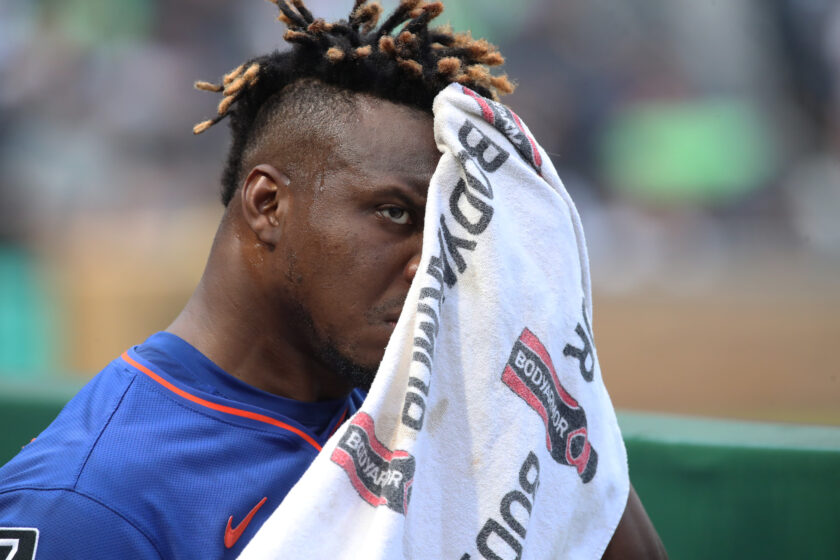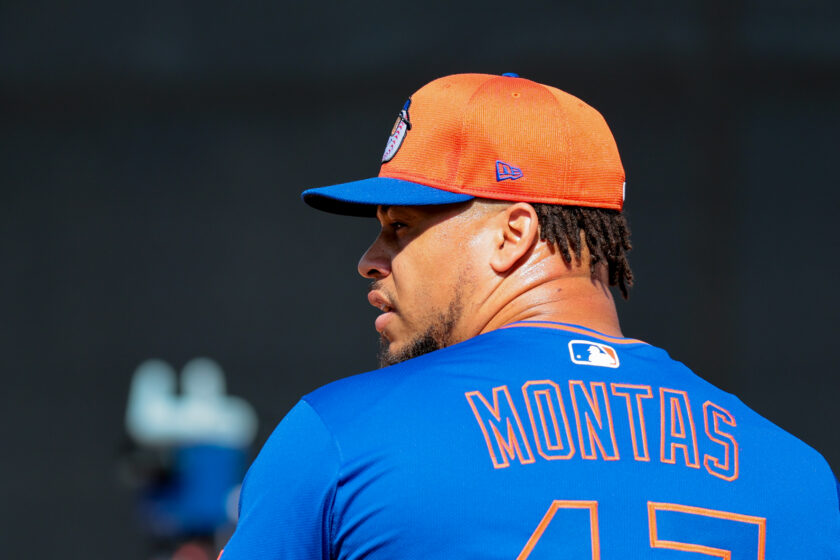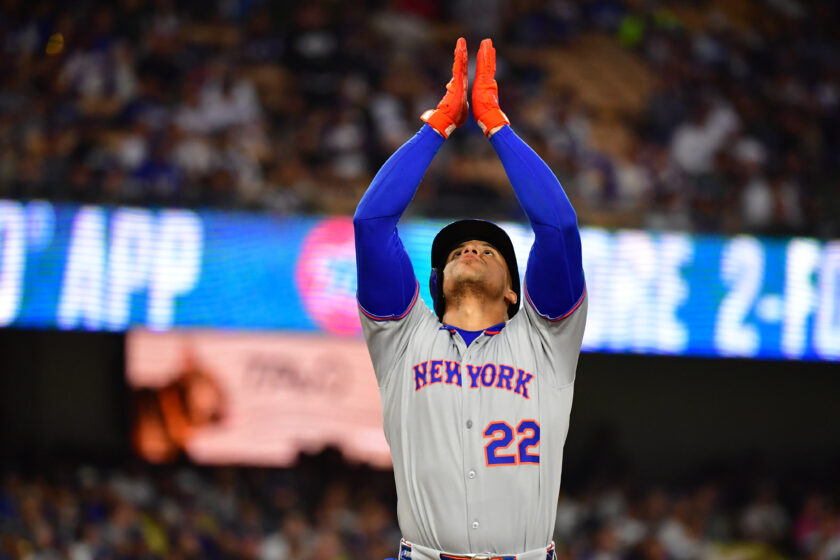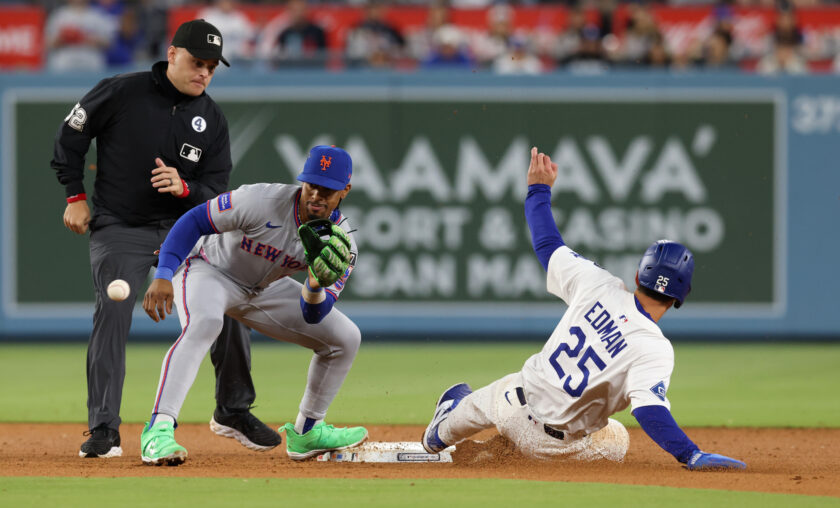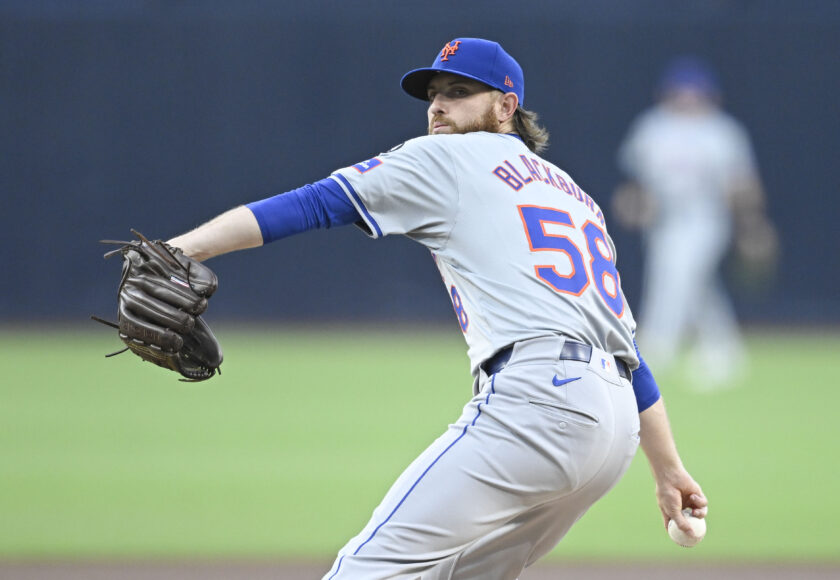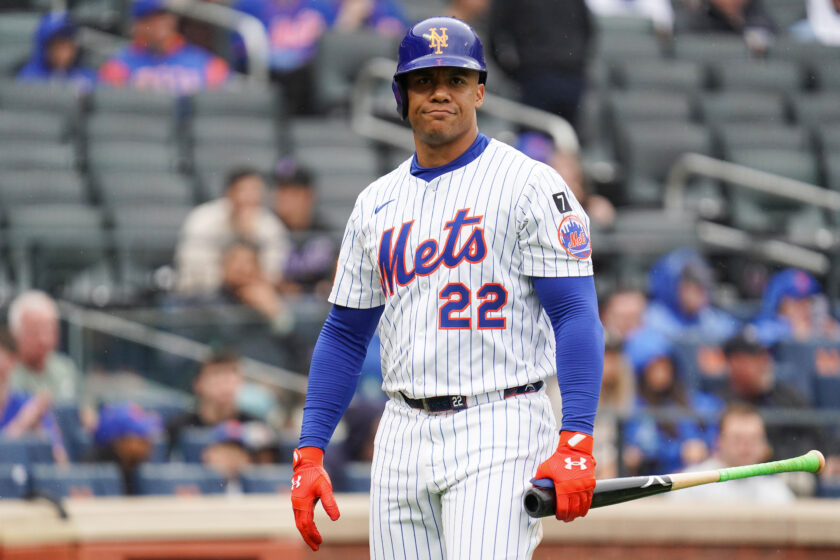New York Mets: Jay Bruce injury could be season-long problem
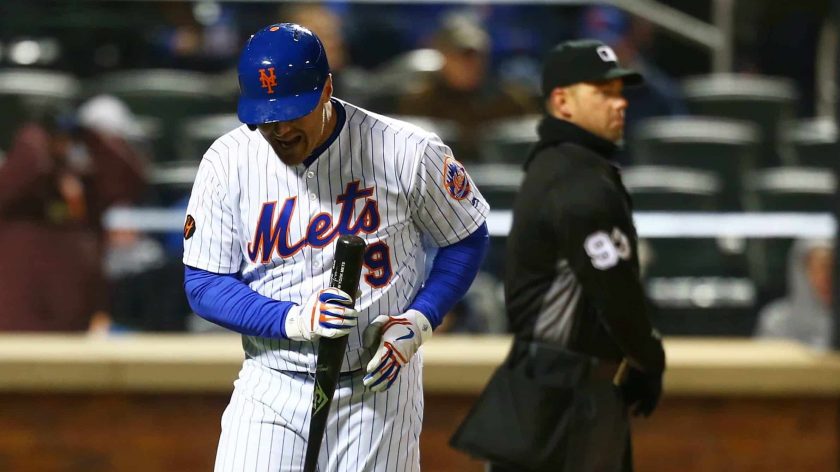
The injury plaguing New York Mets right fielder Jay Bruce shouldn’t be overlooked—it could become a major problem for him and the team.
The New York Mets are off to the best start in team history at 12-3 and sit in first place in the National League East. The luster of their 11-1 start was bound to wear off if for no other reason than self-correction. Baseball teams just don’t play .900 ball. After two tough losses to the Washington Nationals, people are quickly coming back to earth and realizing that this team isn’t flawless.
Among the tumult of losing a five-run eighth inning lead and enduring their first losing streak of 2018, Jay Bruce being held out of the starting lineup twice this week with plantar fasciitis in his left foot barely got a mention.
In the first season of a three-year, $39 million deal, Bruce, 31, missed time in spring training dealing with similar symptoms. It was at the time eschewed as one of those typical spring training aches and pains.
Plantar fasciitis is far from that.
Jay Bruce’s heel may indeed be a ticking time-bomb that bears watching, and an injury that may impact the Mets season in the long term. In fact, Bruce does not have just an injury, but a chronic condition.
It is the type of condition that can either be managed or severely hamper a player until they are no longer able to perform at the same level or tolerate the pain. It can go either way. As Gary Cohen mentioned on the Mets SNY broadcast, R.A. Dickey pitched an entire season with plantar fasciitis. It can, however, just as easily go in the other direction.
[sc name=”Mets Center”]“It’s never really been unbearable where I felt like I had to say something,” Bruce told MLB.com’s Anthony DiComo. “But yesterday and the day before, it definitely was talking to me a little more than I thought it should be. I’m not really one who likes to take days off, but it’s the necessary evil sometimes. It’s important to be healthy.”
One could only watch with baited breath as Bruce hustled down the first base line on the second night he was held out of the starting lineup during a pinch-hitting appearance.
To say the least, how Bruce’s foot injury progresses bears close monitoring and discussion.
Daniel Popper of the New York Daily News said Bruce is now undergoing soft tissue treatment and will look into wearing a splint while sleeping. Cohen added on the broadcast that, to this point, Bruce has declined to wear orthotics and is instead looking into longer-term measures to mitigate the discomfort.
The problem is that there are only a few solutions if a case of plantar fasciitis flares up. There are even fewer solutions other than complete rest. It is chronic and often extremely painful, which could either have a deleterious effect on Bruce’s numbers or send him to the disabled list.
“All homo Sapiens have a thick fibrous band of tissue that begins on the heel bone and extends along the sole of the foot toward the toes,” Sports Illustrated’s Scott Tinsley explained in his aptly titled “The Most Maddening Injury in Sports.” “When this band, aka the plantar fascia, becomes inflamed, it hurts.”
Plantar fasciitis is indeed a maddening injury.
“You almost want to pee in your bed rather than go to the bathroom,” said Albert Pujols to David Leon Moore of USA Today about his plantar fasciitis in 2013.
Pujols was a career .325 hitter in 2013 who had never hit less than .285 to that point but endured the worst season of his career to date that season, hitting just .258 with 17 home runs and 64 RBI before finally shutting it down after 99 games.
The injury continued to plague him, and Pujols finally had a serious ligament release surgery to correct his plantar fasciitis in 2016. While age has been a factor and he has still been a source of power, 2013 marked a downturn in his performance and his heel was certainly a factor.
[sc name=”MLB Center”]Now less than a month into the season, it seems like Bruce is saddled with among the most frustrating and perplexing injuries that an athlete can endure. While it may, at this time, merely be a case of discomfort, the injury is the type that bears watching and his chronic. It is furthermore an injury of use. Bruce, always a hustler is out in the outfield and running the bases on a daily basis.
That doesn’t bode well for either Bruce or the Mets, who are counting on him to be one of the centerpieces of their lineup and provide power from the left-side of the plate.
Plantar fasciitis is an injury of use that doesn’t go away. Sure, baseball players deal with various maladies through which they play during a given season, but this can very well be the type of injury that can hamper a player throughout a season and impact performance.
It is often a matter of pain tolerance, but if a player like Bruce doesn’t have a strong base on which to lean it can very well impact how he performs on the field.
It certainly bears watching. It is too early to sound alarm bells, but not too early to be concerned as to whether Bruce can hold up for an entire season.
Tinsley noted that the pattern of plantar fasciitis often goes as follows:
Stage 1: Athlete is diagnosed with plantar.
Stage 2: Athlete insists he’ll return in a couple of days.
Stage 3: A couple of days pass.
Stage 4: Athlete plays for the first time, oh, a week after diagnosis, and the pain is worse than ever.
Stage 5: Several weeks pass.
Stage 6: Several more weeks pass.
Stage 7: The foot begins to feel better. The athlete attends a first practice and re-aggravates the injury. He ices. He warms. He stretches. He is fitted for insoles.
Stage 8: Athlete makes a highly publicized comeback, steps awkwardly and finds himself back in the trainer’s room.
Bruce has now missed a couple of days and returned to the lineup. It very well may be that we never hear about Bruce’s heel the rest of the season, or this injury can linger, worsen and become a chronic sort of thing that forces him from the lineup on a longer-term basis.
Said Joakim Noah in an article by Patrick A. DeHeer and Nicholas Thompson in Podiatry Today about treating basketball players struggling with the condition: “Plantar fasciitis s—-. It feels like you have needles underneath your feet while you’re playing.”
Taping, injections, stretching, night splints are all mentioned as treatments that can manage the condition. The only way, however, this injury heals itself completely is through either rest or, if serious enough, surgery. Thus, the question remains as to how serious Bruce’s condition is, and how the grind of daily play will take its toll on it throughout this 2018 season and beyond.
“Through the decades,” explained Tinsley, “plantar has taken down some of sports’ biggest names — from Tim Duncan and Kobe Bryant to Pete Sampras. There is, apparently, no rhyme or reason. Some people get it. Some people don’t. Some people recover quickly. Some people don’t.”
The one common denominator is that for all the band-aids that can be applied, the only thing that truly corrects plantar fasciitis is total rest. This goes in direct conflict with the life of an athlete.
Athletes of all sorts have dealt with plantar fasciitis, often to the detriment of their performance. Furthermore, when trying to play on it players often struggle Even if minor, the prognosis is often not good. An injury of use, the pain, which can often be caused by heel spurs, only corrects itself with extended off time. The 162-game grind of a baseball season is not conducive to that.
As Moore notes:
Plantar fasciitis can linger. It is one of the most difficult athletic injuries to heal, partly because there is so little blood flow around the heel and also because any sort of running or jumping continues to offset the various treatment options, primarily physical therapies and anti-inflammatory medicines. Even after extended rest, recurrence is common.
The Mets have outfield depth in backups Brandon Nimmo and Juan Lagares, each of whom hit in the short term when filling in for Michael Conforto as he recovered from offseason shoulder surgery in early April. Neither, however, can adequately replace Bruce’s power, should he be sidelined for the long term.
Nimmo has been particularly impressive but the Mets brought in Bruce to play every day and hit for power. Nimmo is more of an all-around threat but hardly has the home run hitting credentials of a Jay Bruce.
Bruce, who hit 31 home runs between the Mets and Indians in 2017, has hit third for most of the season and is a key cog in the Mets lineup, providing protection behind Yoenis Cespedes.
Aside from Bruce, Adrian Gonzalez is also a question mark as a left-handed power bat, leaving Conforto as the only certainty from the left side of the plate. Gonzalez, 35, has a balky back that requires hours of stretching before games and is thus far off to a slow start.
The bottom line is Bruce is considered a centerpiece player in this lineup and needs to be playing at an optimal level, in the lineup on an everyday basis in order for the Mets to be successful. He now has a condition that possibly could impact that.
This conversation about the plight of plantar fasciitis and Bruce’s left foot may be all for naught. He could indeed be able to tolerate the pain like Dickey and players like Clayton Kershaw have done in the past. Or, it could deeply impact his performance, and become a chronic situation that may have to be managed and force him to the sidelines.
One thing is for certain however, this is not a typical ache and pain that sends a player to the bench for a couple of days and goes away. Jay Bruce is playing on thin ice, and if it cracks that could perilously impact the 2018 New York Mets.
[sc name=”Mets Link Next” link=”https://elitesportsny.com/2018/04/17/new-york-mets-todd-frazier-amed-rosario/” text=”Todd Frazier Key To Unlocking Amed Rosario’s Potential” ]Joshua Casper is a New York based Sportswriter who has written for both local and national publications. He also has broadcasting experience with MSG Networks and has worked in sports media relations. Mr. Casper resides in Brooklyn, NY.

